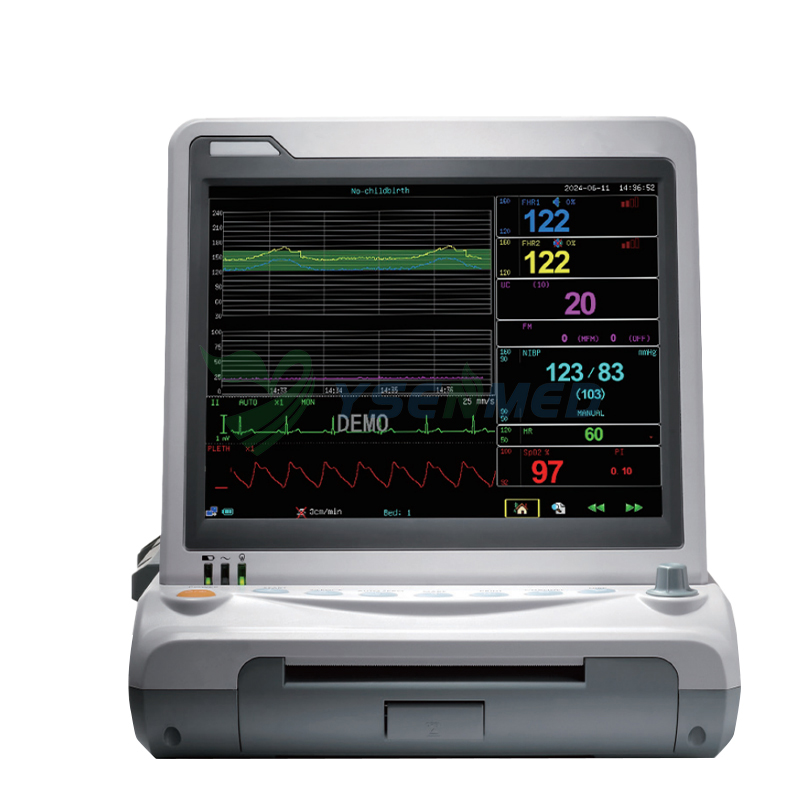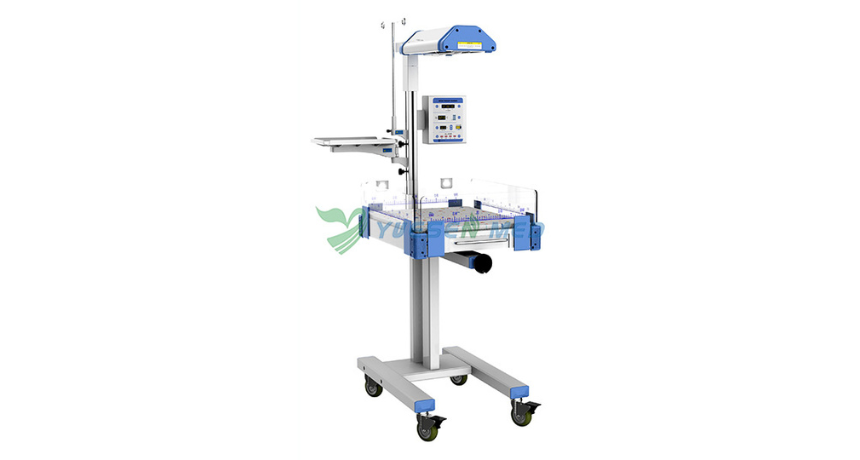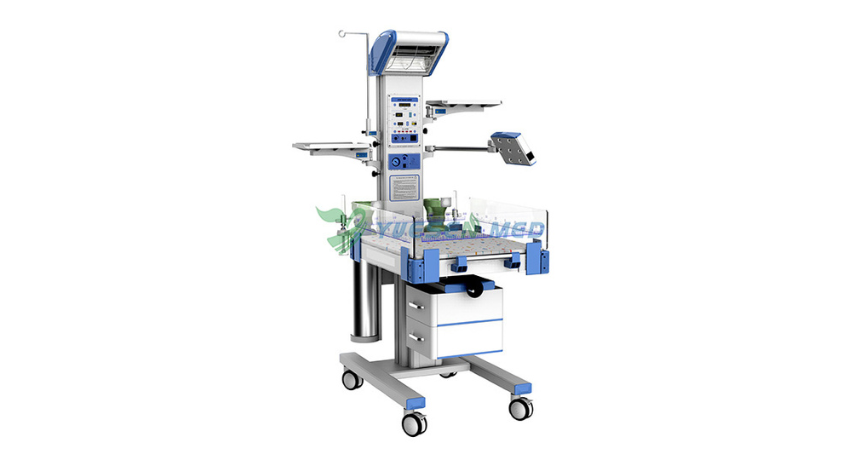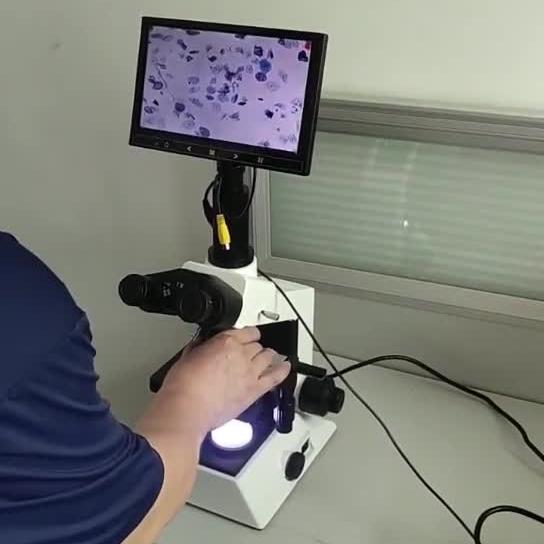Hot Products
YSX500D 50kW DR system set up and put into service in Cambodia.
YSENMED YSX500D 50kW digital x-ray system has been successfully set up and put into service in a hospital in Cambodia.
YSX056-PE serving as a vehicle-mounted x-ray in the Philippines
YSX056-PE 5.6kW portable x-ray unit has been adapted to fit on a truck, to provide mobile x-ray examination service for remote communities in the Philippines.
X Ray Machine To Zimbabwe
x ray machine, 50KW x ray machine
Microscope To Malawi
Achromatic objectives: 4X、10X、40X(S), 100X(S、Oil) Wide field eyepiece: WF10X(WF16X for option) Eyepiece head: Sliding binocular head inclined at 45° Stage: Double layer mechanical stage size 140X140mm, moving range 75X45mm Focusing: Coaxial coarse and
Keeping Moms and Babies Safe: The Essential Role of Fetal and Maternal Monitors
Views : 915
Update time : 2024-12-26 11:26:00
Pregnancy is a beautiful journey, but let's face it: it can also be a bit nerve-wracking. As a mom-to-be, you want to ensure that both you and your baby are safe and healthy throughout these nine months. That's where fetal and maternal monitors come into play. In this article, we'll dive deep into the essential role these monitors play in keeping moms and babies safe, exploring everything from how they work to their benefits and the latest technologies. So, grab a comfy seat and let's get started!

What Are Fetal and Maternal Monitors?
Fetal and maternal monitors are medical devices used during pregnancy to track the health of both the mother and the fetus. They provide real-time data that can help healthcare providers make informed decisions about the care needed for both mom and baby.
Types of Monitors
1. External Fetal Monitors: These are placed on the mother's abdomen to measure the baby's heart rate and contractions.
2. Internal Fetal Monitors: These are inserted into the uterus through the cervix, providing more accurate readings of the baby's heart rate.
3. Maternal Monitors: These track the mother's vital signs, such as heart rate and blood pressure.
Why Are They Important?
You might be wondering, "Why do I need these monitors?" Well, the answer is simple: they help identify potential complications early on. By monitoring the health of both mom and baby, healthcare providers can intervene if something doesn't seem right, ensuring safety and peace of mind.
Early Detection of Complications
Imagine being able to catch a problem before it escalates. That's the power of fetal and maternal monitoring. Conditions like fetal distress, preeclampsia, or even infections can be detected early, allowing for timely interventions.
How Do Fetal Monitors Work?
Fetal monitors work by using sensors to detect the baby's heart rate and the mother's contractions. Let's break it down:
Heart Rate Monitoring
- Normal Range: A typical fetal heart rate ranges from 120 to 160 beats per minute.
- Detection: The monitor picks up the heartbeats and displays them on a screen, allowing healthcare providers to assess the baby's well-being.
Contraction Monitoring
- Timing: The monitors also track the frequency and duration of contractions, which is crucial during labor.
- Analysis: This data helps doctors understand how labor is progressing and if any interventions are necessary.
The Benefits of Using Monitors
Using fetal and maternal monitors comes with a host of benefits. Let's explore some of the key advantages.
Enhanced Safety
The primary benefit is enhanced safety for both mother and baby. Continuous monitoring allows for immediate action if any irregularities are detected.
Peace of Mind
Knowing that both you and your baby are being monitored can significantly reduce anxiety during pregnancy and labor. It's like having a safety net!
Better Birth Outcomes
Studies have shown that proper monitoring can lead to improved birth outcomes, reducing the risk of complications during delivery.
The Latest Technologies in Monitoring
Technology is constantly evolving, and so are fetal and maternal monitors. Here are some of the latest advancements that are making waves in the field.
Wireless Monitoring
Gone are the days of being tethered to a machine! Wireless fetal monitors allow moms to move around freely while still being monitored. This can make labor more comfortable and less stressful.
Smartphone Integration
Imagine being able to track your baby's heart rate right from your smartphone! Some modern monitors come with apps that allow you to view real-time data, making it easier to stay informed.
AI and Machine Learning
Artificial intelligence is stepping into the world of fetal monitoring. AI algorithms can analyze data more quickly and accurately, potentially identifying issues faster than traditional methods.
How to Prepare for Monitoring During Labor
If you're nearing your due date, you might be curious about what to expect during monitoring. Here's a quick guide to help you prepare.
Communicate with Your Healthcare Provider
Before labor, have a chat with your doctor or midwife about the monitoring process. Understanding what to expect can alleviate some of your concerns.
Stay Relaxed
It's normal to feel a bit anxious, but try to stay calm. Deep breathing and visualization techniques can help you relax during monitoring.
Know Your Rights
You have the right to ask questions and express any concerns you may have about the monitoring process. Don't hesitate to speak up!
Common Concerns About Fetal Monitoring
While fetal monitoring is generally safe, some moms may have concerns. Let's address a few common worries.
Discomfort
Some moms worry that the monitors might be uncomfortable. While they can feel a bit cumbersome, especially during labor, most women find the benefits far outweigh any temporary discomfort.
False Alarms
It's true that fetal monitors can sometimes give false alarms. However, healthcare providers are trained to interpret the data and determine when action is necessary.
Privacy Concerns
With the rise of technology, some moms may be concerned about data privacy. Make sure to discuss any privacy concerns with your healthcare provider.
The Role of Healthcare Providers
Healthcare providers play a crucial role in the monitoring process. Here's how they contribute to keeping moms and babies safe.
Continuous Training
Medical professionals undergo rigorous training to interpret monitor data accurately. This ensures that they can respond quickly to any potential issues.
Support and Guidance
During labor, nurses and doctors are there to support you. They'll explain the monitoring process and what the data means, helping you feel more at ease.
Decision-Making
Based on the data from the monitors, healthcare providers can make informed decisions about interventions, ensuring the best possible outcome for both mom and baby.
Conclusion
In conclusion, fetal and maternal monitors are essential tools in ensuring the safety and well-being of both mothers and their babies. They provide critical data that can help detect complications early, leading to better birth outcomes and peace of mind for expectant moms. With advancements in technology, monitoring is becoming more comfortable and accessible, making it easier than ever to keep both you and your little one safe. So, as you embark on this beautiful journey of motherhood, remember that these monitors are there to support you every step of the way. Happy parenting!

What Are Fetal and Maternal Monitors?
Fetal and maternal monitors are medical devices used during pregnancy to track the health of both the mother and the fetus. They provide real-time data that can help healthcare providers make informed decisions about the care needed for both mom and baby.
Types of Monitors
1. External Fetal Monitors: These are placed on the mother's abdomen to measure the baby's heart rate and contractions.
2. Internal Fetal Monitors: These are inserted into the uterus through the cervix, providing more accurate readings of the baby's heart rate.
3. Maternal Monitors: These track the mother's vital signs, such as heart rate and blood pressure.
Why Are They Important?
You might be wondering, "Why do I need these monitors?" Well, the answer is simple: they help identify potential complications early on. By monitoring the health of both mom and baby, healthcare providers can intervene if something doesn't seem right, ensuring safety and peace of mind.
Early Detection of Complications
Imagine being able to catch a problem before it escalates. That's the power of fetal and maternal monitoring. Conditions like fetal distress, preeclampsia, or even infections can be detected early, allowing for timely interventions.
How Do Fetal Monitors Work?
Fetal monitors work by using sensors to detect the baby's heart rate and the mother's contractions. Let's break it down:
Heart Rate Monitoring
- Normal Range: A typical fetal heart rate ranges from 120 to 160 beats per minute.
- Detection: The monitor picks up the heartbeats and displays them on a screen, allowing healthcare providers to assess the baby's well-being.
Contraction Monitoring
- Timing: The monitors also track the frequency and duration of contractions, which is crucial during labor.
- Analysis: This data helps doctors understand how labor is progressing and if any interventions are necessary.
The Benefits of Using Monitors
Using fetal and maternal monitors comes with a host of benefits. Let's explore some of the key advantages.
Enhanced Safety
The primary benefit is enhanced safety for both mother and baby. Continuous monitoring allows for immediate action if any irregularities are detected.
Peace of Mind
Knowing that both you and your baby are being monitored can significantly reduce anxiety during pregnancy and labor. It's like having a safety net!
Better Birth Outcomes
Studies have shown that proper monitoring can lead to improved birth outcomes, reducing the risk of complications during delivery.
The Latest Technologies in Monitoring
Technology is constantly evolving, and so are fetal and maternal monitors. Here are some of the latest advancements that are making waves in the field.
Wireless Monitoring
Gone are the days of being tethered to a machine! Wireless fetal monitors allow moms to move around freely while still being monitored. This can make labor more comfortable and less stressful.
Smartphone Integration
Imagine being able to track your baby's heart rate right from your smartphone! Some modern monitors come with apps that allow you to view real-time data, making it easier to stay informed.
AI and Machine Learning
Artificial intelligence is stepping into the world of fetal monitoring. AI algorithms can analyze data more quickly and accurately, potentially identifying issues faster than traditional methods.
How to Prepare for Monitoring During Labor
If you're nearing your due date, you might be curious about what to expect during monitoring. Here's a quick guide to help you prepare.
Communicate with Your Healthcare Provider
Before labor, have a chat with your doctor or midwife about the monitoring process. Understanding what to expect can alleviate some of your concerns.
Stay Relaxed
It's normal to feel a bit anxious, but try to stay calm. Deep breathing and visualization techniques can help you relax during monitoring.
Know Your Rights
You have the right to ask questions and express any concerns you may have about the monitoring process. Don't hesitate to speak up!
Common Concerns About Fetal Monitoring
While fetal monitoring is generally safe, some moms may have concerns. Let's address a few common worries.
Discomfort
Some moms worry that the monitors might be uncomfortable. While they can feel a bit cumbersome, especially during labor, most women find the benefits far outweigh any temporary discomfort.
False Alarms
It's true that fetal monitors can sometimes give false alarms. However, healthcare providers are trained to interpret the data and determine when action is necessary.
Privacy Concerns
With the rise of technology, some moms may be concerned about data privacy. Make sure to discuss any privacy concerns with your healthcare provider.
The Role of Healthcare Providers
Healthcare providers play a crucial role in the monitoring process. Here's how they contribute to keeping moms and babies safe.
Continuous Training
Medical professionals undergo rigorous training to interpret monitor data accurately. This ensures that they can respond quickly to any potential issues.
Support and Guidance
During labor, nurses and doctors are there to support you. They'll explain the monitoring process and what the data means, helping you feel more at ease.
Decision-Making
Based on the data from the monitors, healthcare providers can make informed decisions about interventions, ensuring the best possible outcome for both mom and baby.
Conclusion
In conclusion, fetal and maternal monitors are essential tools in ensuring the safety and well-being of both mothers and their babies. They provide critical data that can help detect complications early, leading to better birth outcomes and peace of mind for expectant moms. With advancements in technology, monitoring is becoming more comfortable and accessible, making it easier than ever to keep both you and your little one safe. So, as you embark on this beautiful journey of motherhood, remember that these monitors are there to support you every step of the way. Happy parenting!
Related News
Read More >>
 Is an Infant Radiant Warmer Good for Babies' Health?
Is an Infant Radiant Warmer Good for Babies' Health?
Apr .13.2025
What exactly is the infant radiant warmer, and how does it contribute to a baby's health? Let's dive into this topic and explore the ins and outs of infant radiant warmers.
 What is an Infant Radiant Warmer?
What is an Infant Radiant Warmer?
Apr .12.2025
One of the unsung heroes in neonatal care is the infant radiant warmer. But what exactly is it? Let's dive into the world of infant care and explore the ins and outs of this vital device.
 Introduction video of YSENMED YSXWJ-BX301B Digital Biological Microscope.
Introduction video of YSENMED YSXWJ-BX301B Digital Biological Microscope.
Apr .01.2025
Here we share the introduction video of YSENMED YSXWJ-BX301B Digital Biological Microscope.
 YSDR-VET320 veterinary DR & YSB-DU10V color ultrasound serving well in Kiram Veterinary Surgery in Uganda
YSDR-VET320 veterinary DR & YSB-DU10V color ultrasound serving well in Kiram Veterinary Surgery in Uganda
Mar .31.2025
Kiram Veterinary Surgery in Uganda shares the clear images they have got from YSDR-VET320 veterinary digital x-ray system and YSB-DU10V vet color ultrasound machine.



